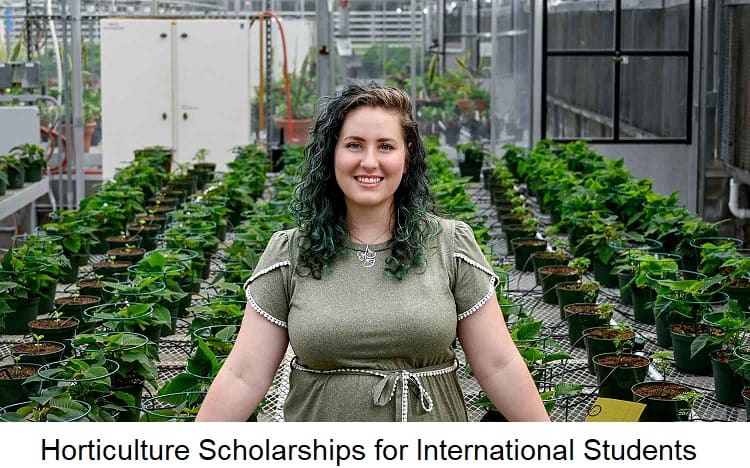I remember the day I first truly fell in love with plants. It wasn’t in a grand botanical garden or during a meticulously planned biology lesson. No, it was in my grandmother’s tiny backyard, a riot of color and fragrance that defied the concrete jungle surrounding it. She’d be out there, hands deep in the soil, humming old tunes, and somehow, under her gentle touch, everything thrived. A wilting rose would perk up, a barren patch would burst into life. I was just a kid, maybe seven or eight, but watching her, feeling the cool earth sift through my fingers, smelling the rich scent of damp soil and blooming petunias – that was it for me. That was the spark.
Years passed, and that spark grew into a quiet, persistent fire. While my friends were dreaming of careers in finance or tech, I was poring over seed catalogs, devouring books on plant biology, and experimenting with propagating cuttings on my windowsill. I knew, with a certainty that hummed in my bones, that my future was intertwined with the green world. I wanted to understand the intricate dance of roots and leaves, the magic of photosynthesis, the delicate balance of an ecosystem. I wanted to be a horticulturist.
But dreams, especially those that involve formal education, often come with a hefty price tag. As I neared the end of high school, the reality of university tuition loomed large, a dark cloud over my verdant aspirations. My family wasn’t wealthy; every penny counted. The thought of accumulating mountains of student debt before even starting my career felt like a heavy weight, threatening to crush my passion before it could truly blossom. I started to wonder if my green thumb would have to remain just a hobby, a solace rather than a profession.
Then, one rainy afternoon, while feeling particularly dejected and browsing university websites for horticulture programs, a small link caught my eye: "Scholarships and Financial Aid." It was like a tiny sprout pushing through concrete. Could it be? Could there really be opportunities to fund this very specific, very niche passion of mine? My initial skepticism was quickly replaced by a flicker of hope. I began to dig, much like a gardener preparing a new bed, clearing away the weeds of doubt and searching for fertile ground.
What I discovered was a revelation. The world of horticulture, I learned, wasn’t just about pretty flowers. It encompassed everything from sustainable agriculture and urban farming to landscape design, botanical research, viticulture, and even therapeutic horticulture. And for every one of these fascinating sub-fields, it seemed, there were organizations, foundations, and individuals dedicated to nurturing the next generation of plant enthusiasts. The term "horticulture scholarships" became my new mantra, my personal quest.
My first piece of advice, the one I’d give to anyone standing where I once stood, is this: don’t assume your passion is too obscure for funding. The green industry is vast and vital, impacting everything from the food we eat to the air we breathe. There’s a genuine need for skilled professionals, and many institutions recognize that need by offering financial support.
Where did I start looking? Everywhere. My university’s financial aid office was a good initial resource, listing specific departmental scholarships for horticulture students. These were often smaller, more targeted awards, but every little bit helps. I also delved into the websites of professional organizations. Groups like the American Society for Horticultural Science (ASHS), the Garden Club of America, the American Floral Endowment, and various state horticultural associations often have their own scholarship programs. These organizations are deeply invested in the future of the industry, so they actively seek out promising students. Don’t overlook specialized groups either; if your interest leans towards landscape architecture, search for landscape design scholarships. If you’re into growing grapes, look for viticulture scholarships. For those interested in environmental work, sustainable agriculture scholarships might be a perfect fit.
I spent countless hours on scholarship search engines, typing in every variation of "plant science scholarships," "gardening scholarships," and "botany financial aid" imaginable. Some databases are broader, like Fastweb or Scholarships.com, but I found more success by narrowing my focus to those specific to agriculture, environmental studies, or natural sciences. Local garden clubs, often overlooked, proved to be another goldmine. These community-focused groups frequently offer small, but incredibly meaningful, awards to students from their area pursuing horticultural studies. They’re often less competitive and a great way to build local connections.
Once I started finding potential scholarships, the next phase was the application itself. This, I quickly realized, was not a task to be rushed. Each application was an opportunity to tell my story, to articulate my passion and my vision. I learned to read every single requirement meticulously. Missing a deadline or failing to submit a specific document could instantly disqualify me.
The essay, for most horticulture scholarships, was the heart of the application. This wasn’t just about listing my academic achievements; it was about conveying why I loved plants, what I hoped to accomplish, and how a career in horticulture would allow me to contribute positively to the world. I wrote about my grandmother’s garden, about the thrill of watching a seed sprout, about my growing concerns for environmental sustainability and how plant science could offer solutions. I tried to make my essays personal, authentic, and memorable. I didn’t just say I was passionate; I showed it through anecdotes and specific examples of my experiences, even if they were just experiments in my own backyard.
Recommendation letters were another critical component. I made sure to ask professors, mentors, or even my high school biology teacher well in advance, providing them with my resume, a list of the scholarships I was applying for, and a brief summary of my goals. This helped them write letters that were specific and compelling, highlighting my dedication and potential. Transcripts, a resume detailing my relevant experiences (even volunteer work at a local nursery counts!), and sometimes a portfolio of design projects or research ideas were also common requirements.
My first few applications were nerve-wracking. I remember hitting "submit" on one of the larger horticulture scholarships, my heart pounding, convinced I hadn’t done enough. The waiting period was agonizing. Rejection letters, when they came, were tough, but I learned not to take them personally. It just meant it wasn’t the right fit, or the competition was incredibly stiff. I kept applying. Persistence, I discovered, was as vital in scholarship hunting as it is in gardening. You don’t get a bumper crop from planting just one seed.
And then, one glorious morning, an email arrived. It wasn’t a rejection. It was an acceptance, followed by the news that I had been awarded a significant horticulture scholarship from a regional plant society. I remember yelling with joy, startling my dog. That first scholarship wasn’t just money; it was validation. It was proof that my dream was tangible, that others believed in its worth. It fueled my motivation and gave me the confidence to apply for even more.
Over the course of my undergraduate and later my graduate studies, I was fortunate enough to receive several horticulture scholarships. Some were merit-based, recognizing my academic performance and research potential. Others were need-based, acknowledging the financial hurdles I faced. There were scholarships specifically for students interested in sustainable landscape practices, and even one from a local nursery association for aspiring growers. Each one chipped away at the cost of tuition, textbooks, and living expenses, slowly but surely lifting the financial burden from my shoulders.
The impact of these scholarships went far beyond just money. They allowed me to focus wholeheartedly on my studies and research without the constant worry of how I would pay for everything. I could immerse myself in botanical studies, spend hours in the greenhouse, and participate in field trips without having to juggle multiple part-time jobs. This freedom allowed me to excel academically, to pursue internships, and to truly explore the breadth of the green industry.
My advice for those navigating this path is to be strategic. Tailor each application to the specific scholarship. If a scholarship is for urban horticulture, emphasize your interest in city greening projects. If it’s for plant pathology, highlight your curiosity about plant diseases. Don’t use a generic essay for every application. Show genuine interest and connect your aspirations directly to the scholarship’s mission.
Networking is another powerful tool. Attend industry events, join student chapters of professional organizations, and talk to your professors. Often, they know about obscure scholarships or can put you in touch with people who do. A personal recommendation or a tip from someone already in the field can be invaluable.
And don’t overlook the smaller awards. A hundred dollars here, five hundred there – it all adds up. Sometimes the smaller, more local scholarships have fewer applicants, increasing your chances of success. Every scholarship, no matter its size, is a testament to your dedication and helps build your resume and confidence.
The journey through horticulture scholarships was a learning experience in itself. It taught me perseverance, the importance of clear communication, and the value of articulating my passion. It transformed my path from a hopeful aspiration into a funded reality. Today, as I work in a field I adore, contributing to sustainable urban landscapes, I often think back to that little link on a university website.
The world needs more green. It needs dedicated plant scientists, innovative landscape designers, thoughtful urban farmers, and passionate educators. If your heart beats for the botanical world, if you dream of cultivating growth and beauty, don’t let financial barriers deter you. Horticulture scholarships are out there, waiting to be discovered, waiting to help you cultivate your own dreams. Dig deep, apply diligently, and believe in the power of your green aspirations. Just like a tiny seed holds the promise of a mighty tree, your passion, supported by the right resources, can blossom into an extraordinary future.


